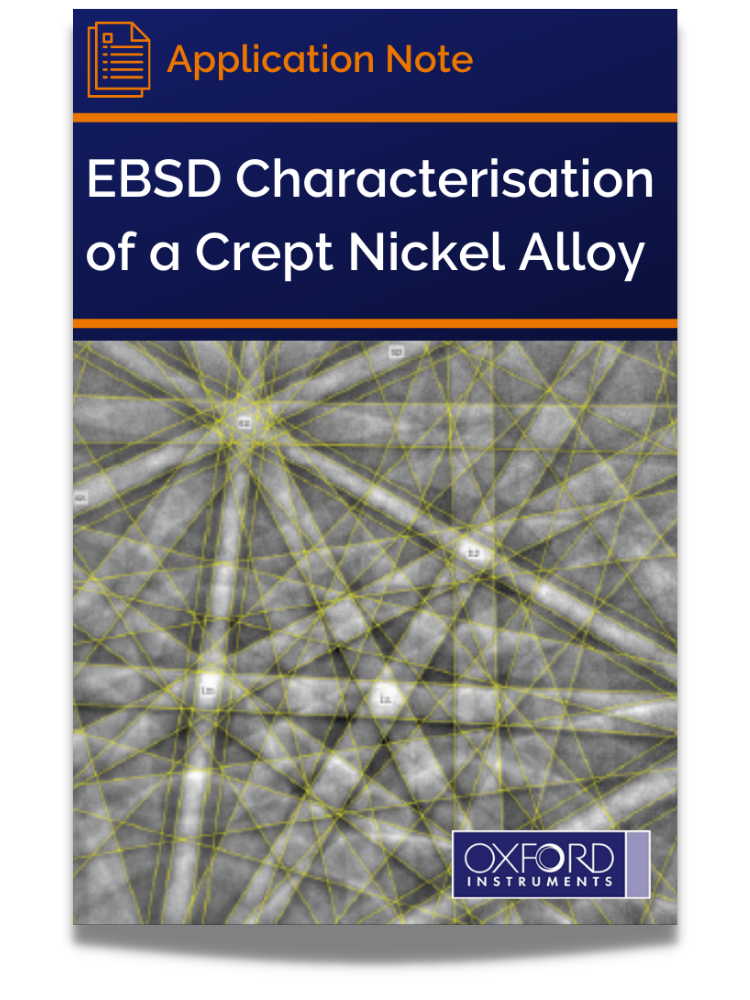EBSD Characterisation of a Crept Nickel Alloy
Microanalysis is a powerful tool for understanding potential failure mechanisms and the potential lifetime of many materials. In this example, the microstructure and damage distribution following creep deformation of a nickel superalloy is studied using electron backscatter diffraction (EBSD) and energy dispersive spectrometry (EDS).
Oxford Instruments AZtecSynergy system is used to acquire both the EBSD and EDS data and to study deformation in the sample. The EBSD data was collected using the NordlysNano detector which is optimised for collecting high quality, distortion-free EBSPs, the EDS data was collected with an X-MaxN 150 large area SDD detector.
In this example, some additional data processing is achieved using an additional third-party software package, BLG CrossCourt 3, which processes EBSD patterns using a cross-correlation technique to measure residual strain. This package uses the raw, unprocessed EBSPs saved as TIFF files during the acquisition process. For this application, the high quality, distortion-free patterns collected from the NordlysNano detector are essential.
By downloading this application note you will see:
- How acquiring EBSD with X-ray data in the SEM is a powerful tool to characterise materials to determine the distribution of creep damage
*Please note, this application note refers to NordlysNano and X-Max, they have since been upgraded to Symmetry S3 & Ultim Max respectively
Get my copy!




